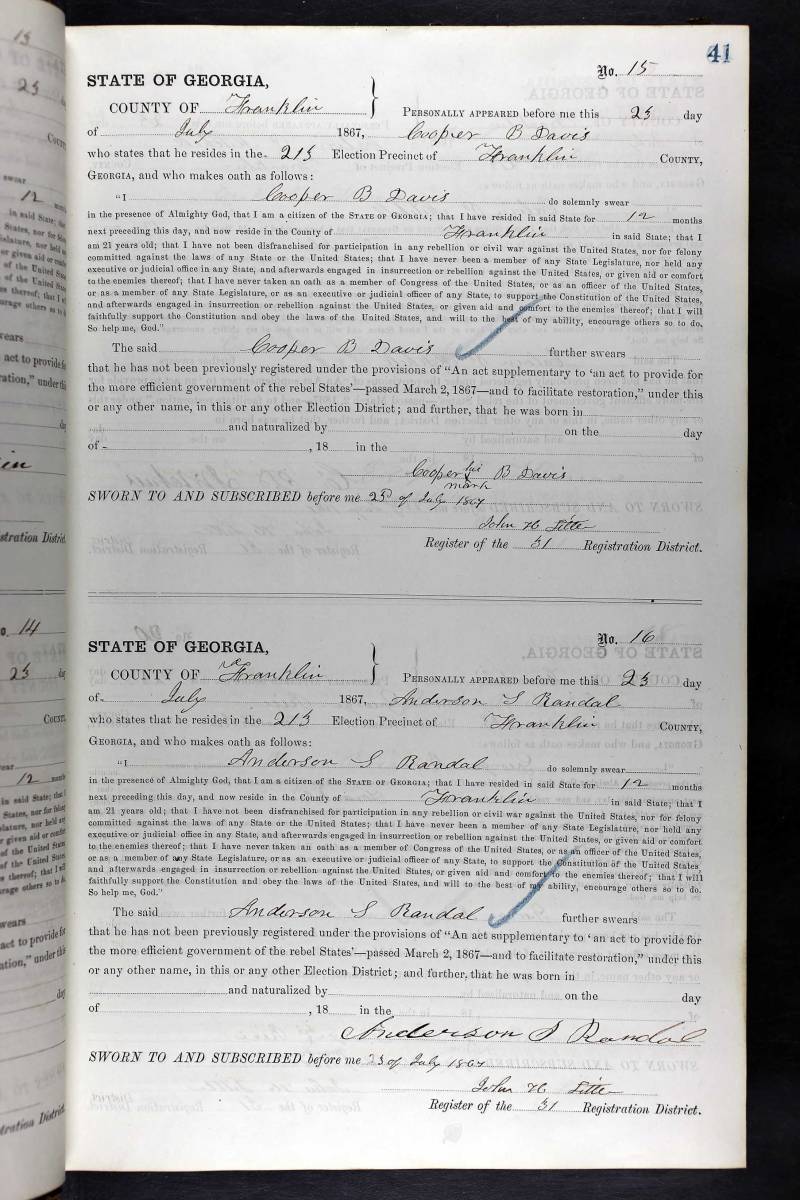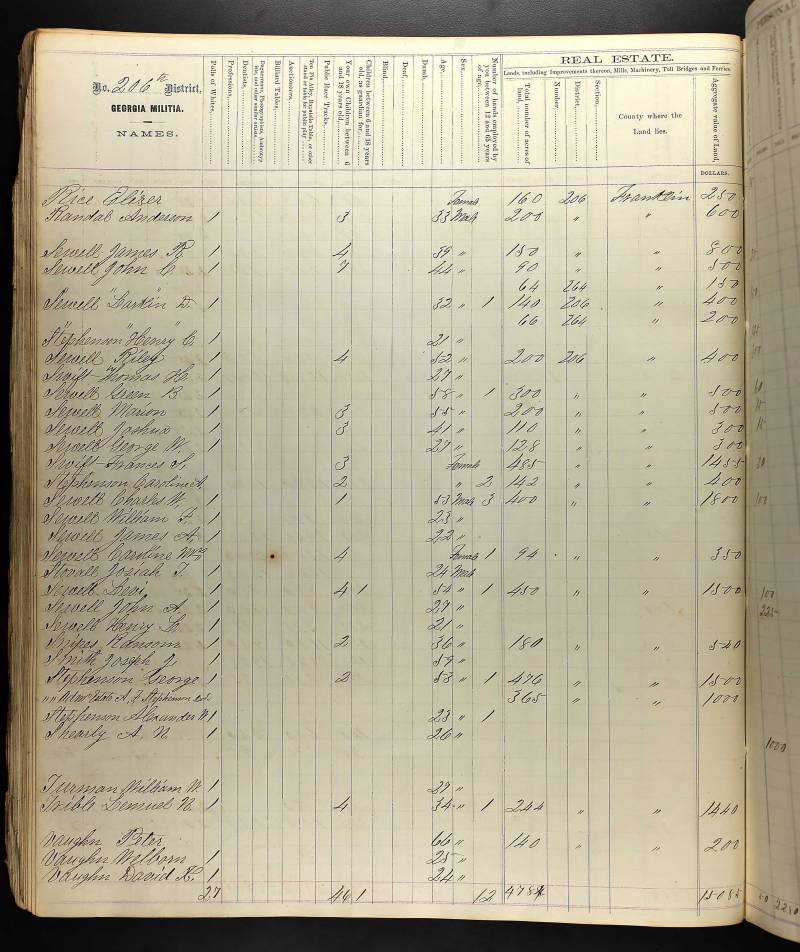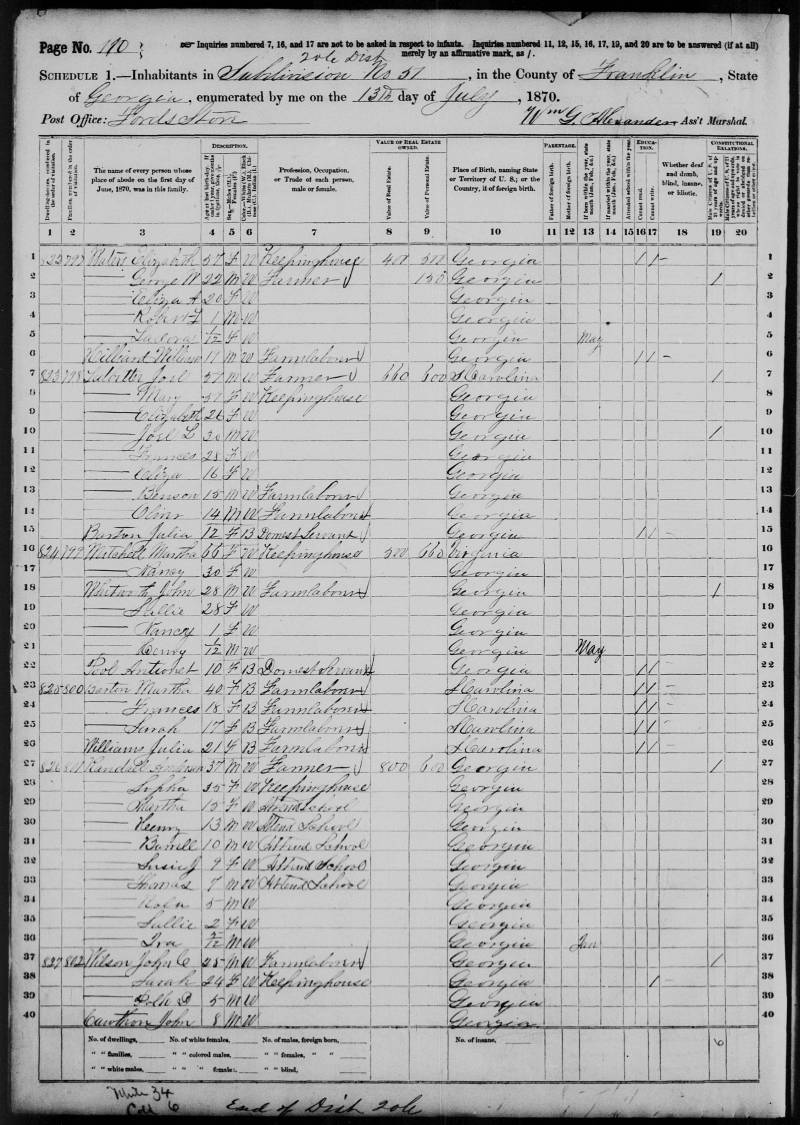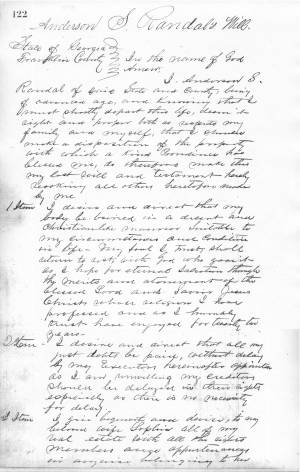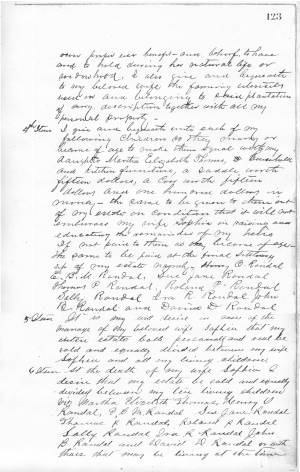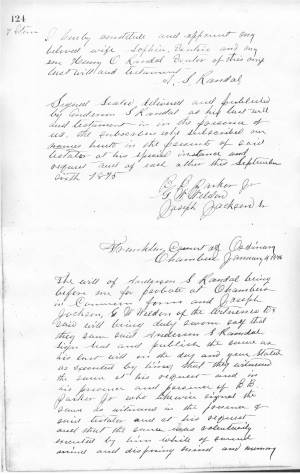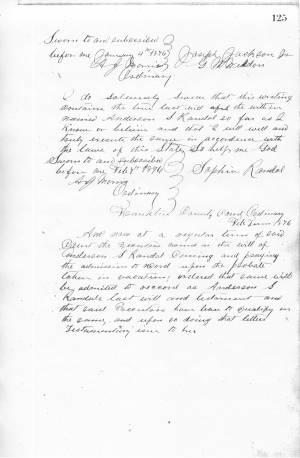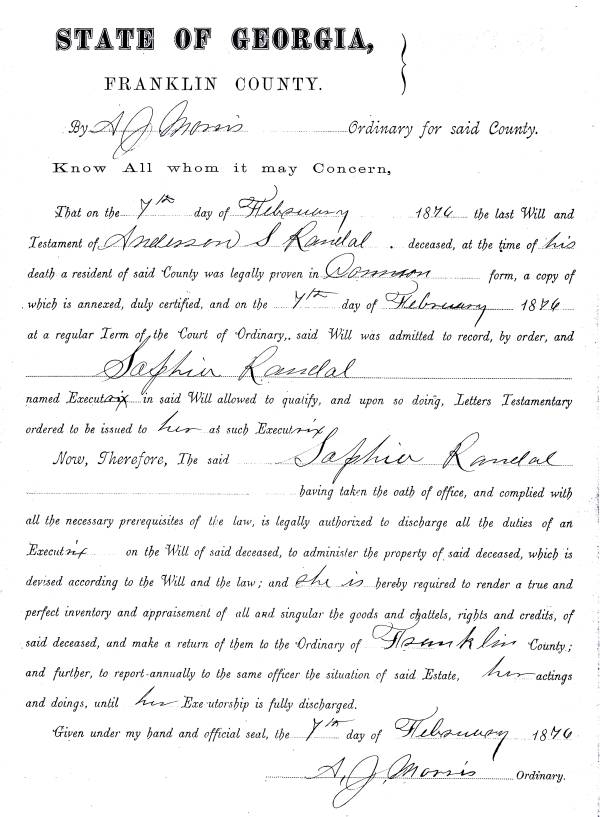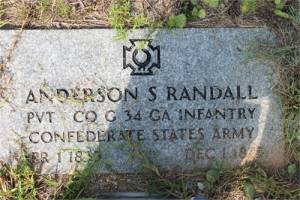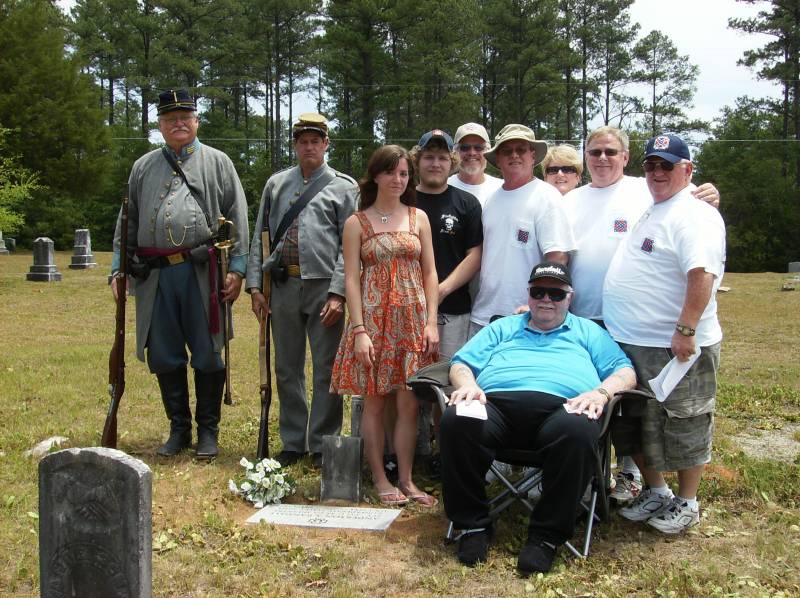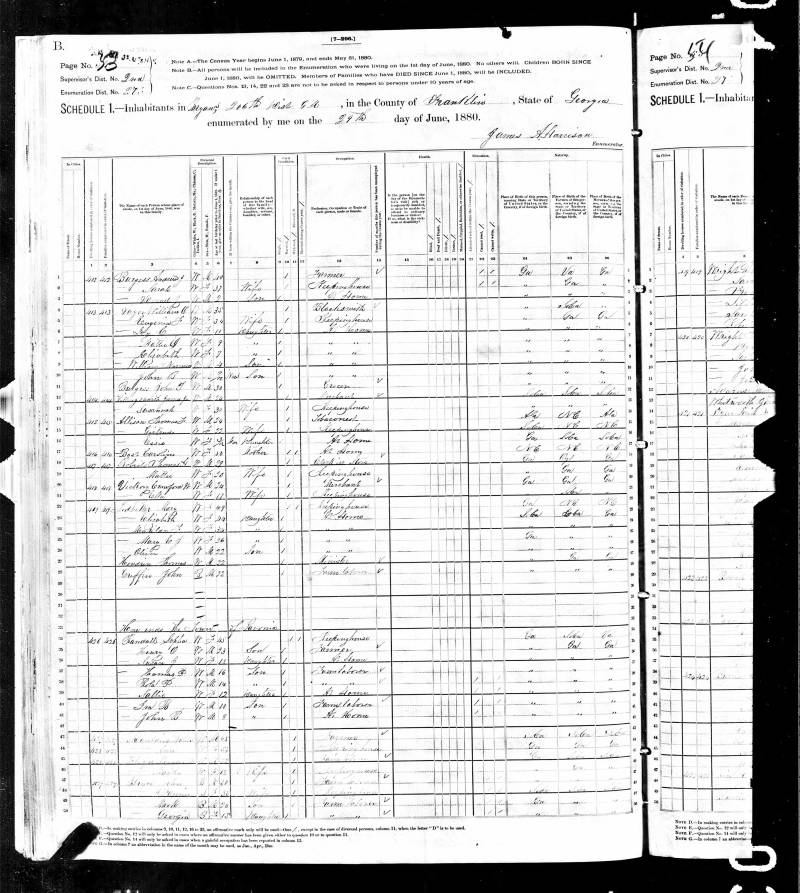Table of Contents
Anderson Smith Randal
Son of Oney Cypress Randal and Susanna(h) “Sukey” W. Wilkins, Anderson Smith Randal was born on April 1, 1833 in Franklin County, Georgia. He was named in honor of his uncle (his mother's brother), Anderson Smith Wilkins.
Marriage & Children
On August 26, 1852, Anderson (age 19) married Sophia Mitchell (age 18) in Lavonia, Georgia (Franklin County, Georgia).1)
[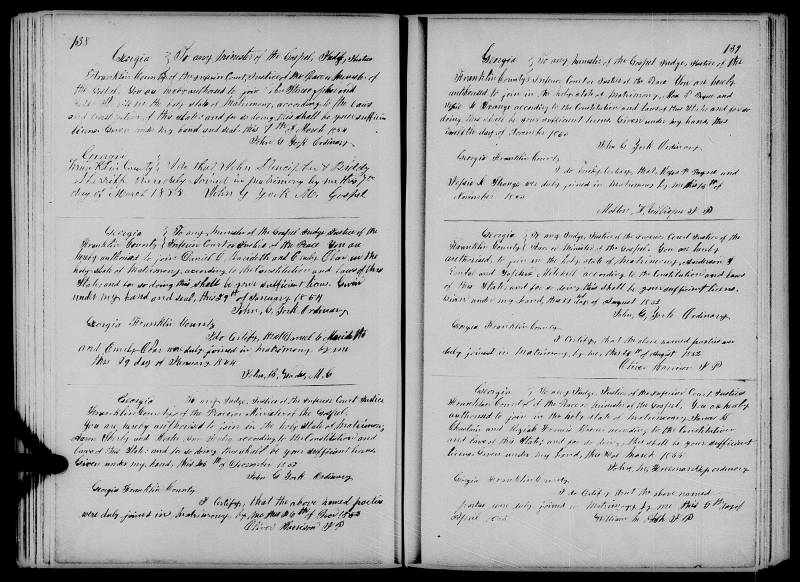 ]2)
]2)
Transcript of Marriage License & Marriage Record
Georgia | Franklin County: To any Judge, Notice of the Inferior Court Justice of the Peace or Minister of the Gospel, you are hereby authorized, to join in the holy state of matrimony Anderson S. Randal and Sophia Mitchell according to the Constitution and laws of this state; and for so doing this shall be your sufficient license.
Given under my hand, this 22nd day of August 1852.
John E. York, Ordinary
Georgia Franklin County
I certify that the above named parties were duly joined in matrimony, by me, this 26th of August 1852
Oliver Harrison, J.P.
Anderson and Sophia had the following children:
- Martha Elizabeth "Mattie" Randall (March 25, 1855 - March 22, 1939) 3)
- Henry Oran Randall (June 04, 1857 - September 11, 1930)
- Elisha Burrell M. Randall b: Abt 1859 in Lavonia, Franklin, Georgia. d: 1883. Married Mary Elizabeth Griffin b: September 13, 1857 in Hartwell, Hart, Georgia. d: 1924. They had 1 child (Thomas Randal), b. about 1880.
- Susan “Susie” Jane Randall (Born April 6, 1862 in Georgia. Died March 28, 1943 in Decatur, TX)
- Thomas Watson Randall (September 22, 1863 – April 30, 1926)
- Roland Pickney Randall (February 6, 1866 – August 24, 1915)4)
- Sallie D. Randall (b November 19, 1868 - d. Aug. 19, 1908)
- Ira Robert Randall (January 1870 - Jan. 24, 1942). Ira married Mary Lou Virginia “Jeanie” Whitworth (April 1878 - Sept. 25, 1936).
- John B. Randall (November 24, 1871 – March 20, 1894)
- David D. Randall (b: Aft. 1871 – d: Bef 1880)
The “Smith” middle name
Some have wondered about the origin of Anderson Smith Randal's middle name of “Smith”.
He was likely named in honor of his Uncle, Anderson Smith Wilkins. However, this was also an attempt to perpetuate the “Smith” middle name… which (interestingly) stemmed from the Marrow family.
Anderson Smith Randal's mother was Susanna(h) “Sukey” W. Wilkins. Her father (Anderson Smith Randal's grandfather) was named Charles Smith Wilkins.
Charles Smith Wilkins' mother (Anderson Smith Randal's great grandmother) was named Arabella Smith Marrow.
Arabella Smith Marrow's mother (Anderson Smith Randal's great, great grandmother) was named Arabella Gromarrin. She had married Luke Smith. After Luke Smith died, she married Daniel Marrow.
So, ultimately, Anderson Smith Randal's middle name was in remembrance of his Great, Great grandfather, Luke Smith.
Life in the late 1800s
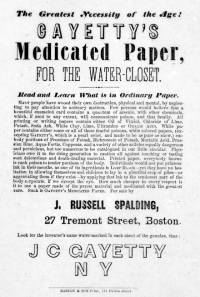
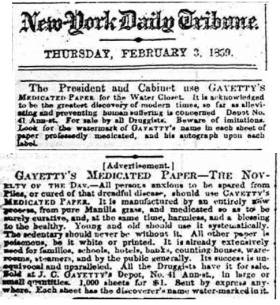 The only commercial toilet paper in the U.S. from 1857 until 1890, Gayetty's Medicated Paper (also known as “therapeutic paper”) had to compete against free alternatives in the form of Farmer's Almanac (which had a circulation of 225,000 in 1863), Sears & Roebuck catalog pages (founded in 1886)… and even corn cobs, moss and leaves. Gayetty's primary marketing approach was a “scare” tactic stating that printed paper contained numerous poisons, and using such paper on one's bottom was unhealthy because, they claimed, those poisons were absorbed into the body. To assure buyers that they had the genuine article, each sheet had inventor Joseph C. Gayetty's name watermarked on it. The “Medicated” term referred to the fact that the sheets were treated with aloe (which Gayetty claimed prevented hemorrhoids). Users still had to look out for the occasional splinter in the sheets. It wasn't until 1930 that Northern Tissue invented a “splinter-free” toilet paper.5)6)
The only commercial toilet paper in the U.S. from 1857 until 1890, Gayetty's Medicated Paper (also known as “therapeutic paper”) had to compete against free alternatives in the form of Farmer's Almanac (which had a circulation of 225,000 in 1863), Sears & Roebuck catalog pages (founded in 1886)… and even corn cobs, moss and leaves. Gayetty's primary marketing approach was a “scare” tactic stating that printed paper contained numerous poisons, and using such paper on one's bottom was unhealthy because, they claimed, those poisons were absorbed into the body. To assure buyers that they had the genuine article, each sheet had inventor Joseph C. Gayetty's name watermarked on it. The “Medicated” term referred to the fact that the sheets were treated with aloe (which Gayetty claimed prevented hemorrhoids). Users still had to look out for the occasional splinter in the sheets. It wasn't until 1930 that Northern Tissue invented a “splinter-free” toilet paper.5)6)
The names and ages of Anderson & Sophia's children are supported in the 1860 and 1870 “United States Censuses” (which include all children born up to those dates).
1860 United States Federal Census
State: Georgia
County: Franklin
Post Office: Carnesville
Date: July 31, 1860
| Name | Age | Gender | Occupation | Birthplace |
|---|---|---|---|---|
| Anderson Randal | 27 | M | Farmer | Georgia |
| Sophia Randal | 26 | F | Domestic | Georgia |
| Martha Randal | 5 | F | Georgia | |
| Henry O. Randal | 3 | M | Georgia | |
| Eliza B. Randal | 11/12 | F | Georgia |
Note: Elisha Burrell M. Randall was incorrectly identified as “Eliza” and female rather than male.
Source: Year: 1860; Census Place: Subdivision, Franklin, Georgia; Roll: M653_121; Page: 670; Image: 670; Family History Library Film: 803121
The “War of Northern Aggression”
On January 19, 1861, 293 delegates to the Georgia Secession Convention at the statehouse in Milledgeville, Georgia, met to vote on the “Ordinance of Secession” (to announce Georgia's formal secession from the United States of America). The vote was 208 yeas 89 nays on January 19, 1861 to ratify the “Ordinance of Secession”. The “Ordinance of Secession” was signed on January 21, 1861 and enacted on January 22, 1861.7) This was followed by the ”Georgia Declaration of Secession“ listing the causes leading to the secession.
The term “War of Northern Aggression” is used here because that is likely what the war was called by our Southern ancestors (or “War for Southern Independence”). While the term “Civil War” was used by Abraham Lincoln during multiple occasions – and the U.S. Supreme Court (The Brig Amy Warwick, et al., 67 U.S. 635, 636, 673 (1862)) during the war, it is entirely incorrect.
A civil war is a war between citizens of the same state contending for control of the same government. The war between the North and South was the war of the North against a separate government, that as long as it lasted was a de facto nation, exercising all the powers of an independent government. The term “civil war” concedes all that the North ever claimed, makes [the South] guilty of treason, and is untrue to the facts in the case. [The] term “civil war,” while incorrect as a simple definition of the struggle, does a gross injustice to the South by degrading her struggle for a national existence into a partisan conflict. I never use it and mark it out of every book where I find it. Let history tell the truth.
~ Rev. S.A. Steel, Jackson, Tenn.
Source: “The Phrase “Civil War”,” Confederate Veteran, July 1912, pg. 347
Officially, the U.S. Congress used the term “The War between the States” in a report to the Senate on joint resolution No. 41, printed in the Congressional Record of March 2, 1928, on page 4061. However, the National Park Service, the government organization entrusted by the United States Congress to preserve the battlefields of the war, uses the term “Civil War”.
The Conscription Act
On April 16, 1862, the Confederacy—in need of troops to fight in its armies—passed the Conscription Act, the first effective general military draft in America.
When the “War of Northern Aggression” began, the Confederacy had set its volunteers’ terms of enlistment for one year. However, as the year mark neared, it became obvious that the war would last for much longer and that the Confederate armies would need more soldiers. So in April 1862, in a secret session of the Confederate Congress, the Conscription Act was passed, which drafted healthy white men ages 18 to 35 for three-year terms (later acts would extend the ages first to 18 to 45, and later to 17 to 50). The Confederate Congress also extended the terms of those already serving under one-year enlistments for another two years (though the soldiers would effectively serve for the duration of the war).
[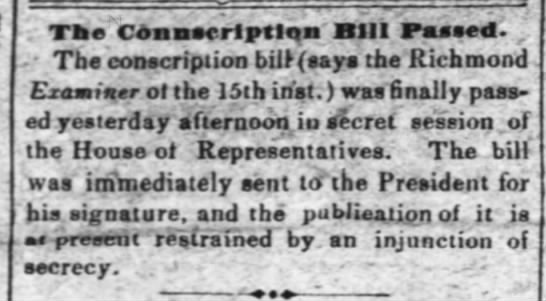 ]
]
The act allowed those drafted to find substitutes to serve in their place (though this would be discontinued in December 1863) and exempted men serving in occupations deemed critical to the war effort or civilian life. In the fall of 1862, exemptions were also extended to those who owned or oversaw 20 or more slaves.
The U.S. Federal government instituted its own draft a year later, in March 1863. The Enrollment Act called on men ages 20 to 45 to register for the draft. As in the South, substitutes were allowed, or else men could pay a $300 commutation fee (though commutation fees were eventually banned in 1864). Like the Confederacy, the U.S. Federal government allowed some exemptions for certain occupations, physical disability, and religious conscientious objectors.
Conscription was partially meant to encourage voluntary enlistment, as those who joined as volunteers were eligible to receive bounty money (enlistment bonuses) from states, counties, cities, and the U.S. federal government—in some cases totaling a sum upwards of $1,000. However, these bounties created the problem of bounty jumping, wherein men would volunteer, collect the money, then desert and re-enlist elsewhere and collect that money as well.
In the Union and Confederacy, conscription was generally a disproportional burden on the poor, since they were unable to pay for a substitute or a commutation fee. But while the draft was hated in both the North and the South, it was only in the North that it sparked riots, the most violent of which killed more than a hundred people—many of them black—in the New York City Draft Riots of July 1863.
Sources:
https://blog.fold3.com/americas-first-military-draft-begins-april-16-1862/
https://www.newspapers.com/clip/4643787/confederate_conscription_bill_passed/
Shortly after passage of “The Conscription Act”, Anderson Smith Randal (then age 29) volunteered to serve in the Confederate 34th Infantry Regiment, Co. G on May 12, 1862 in Carnsville, GA (Franklin County).8)
He was joined by his Brother-in-law, Elisha (Eli) W. Mitchell (sometimes appearing as Mitchael). Initially a Private, Elisha W. Mitchell was soon promoted to 1st Corporal. Elisha W. Mitchell was first captured at Champion Hill, Mississippi, on May 16, 1863, and was captured again at Vicksburg, Mississippi, on July 4, 1863. Elisha W. Mitchell was paroled July 8, 1863.9)
The Georgia 34th Infantry Regiment
[![The 34th Georgia Infantry Regimental Flag. At right is Jerry Bishop, the great-great-grandson of 2nd Sgt. John T. Hasty of the 34th GA, Co. B. Pictured on the left is Morgan Adams, the great-great-great-great-grandson of 2nd Sgt. Hasty. \\ Source: [[http://www.battleofraymond.org/flag.htm|http://www.battleofraymond.org/flag.htm]] The 34th Georgia Infantry Regimental Flag. At right is Jerry Bishop, the great-great-grandson of 2nd Sgt. John T. Hasty of the 34th GA, Co. B. Pictured on the left is Morgan Adams, the great-great-great-great-grandson of 2nd Sgt. Hasty. \\ Source: [[http://www.battleofraymond.org/flag.htm|http://www.battleofraymond.org/flag.htm]]](/lib/exe/fetch.php?media=anderson_smith_randal:confederate_34th_regimental_infantry_flag.jpg) ]
Organized in May, 1862, at Camp McDonald, near Marietta, Georgia, the 34th Infantry Regiment recruited its members in the counties of Bartow, Cherokee, Floyd, Franklin, Polk, Cobb, Paulding, Carroll, Haralson, and Jackson. The unit was sent to Tennessee, then Mississippi where it was assigned to T.H. Taylor's Brigade, Department of Mississippi and East Louisiana. It participated in the battle at Champion's Hill (which the Confederates referred to as “The Battle of Baker's Creek”) and was captured at Vicksburg on July 4, 1863. Exchanged and reorganized, the 34th Infantry Regiment was placed in General Cummings' Brigade, Army of Tennessee. The 34th was active in many engagements from Chattanooga to Nashville, and ended the war in North Carolina. It reported 34 casualties at Chattanooga, contained 369 men and 266 arms in December, 1863, and had 219 fit for duty in January, 1865. Very few surrendered in April. The field commanders were Colonel J.A.W. Johnson, Lieutenant Colonel J.W. Bradley, and Majors Thomas T. Dorough and John M. Jackson.
]
Organized in May, 1862, at Camp McDonald, near Marietta, Georgia, the 34th Infantry Regiment recruited its members in the counties of Bartow, Cherokee, Floyd, Franklin, Polk, Cobb, Paulding, Carroll, Haralson, and Jackson. The unit was sent to Tennessee, then Mississippi where it was assigned to T.H. Taylor's Brigade, Department of Mississippi and East Louisiana. It participated in the battle at Champion's Hill (which the Confederates referred to as “The Battle of Baker's Creek”) and was captured at Vicksburg on July 4, 1863. Exchanged and reorganized, the 34th Infantry Regiment was placed in General Cummings' Brigade, Army of Tennessee. The 34th was active in many engagements from Chattanooga to Nashville, and ended the war in North Carolina. It reported 34 casualties at Chattanooga, contained 369 men and 266 arms in December, 1863, and had 219 fit for duty in January, 1865. Very few surrendered in April. The field commanders were Colonel J.A.W. Johnson, Lieutenant Colonel J.W. Bradley, and Majors Thomas T. Dorough and John M. Jackson.
Muster Roll of Company G, 34th Regiment, Georgia Volunteer Infantry.
Champion Hill (Bakers Creek)
Campaign: Grant's Operations Against Vicksburg
Date(s): March-July 1863
Principal Commanders:
Lieutenant General Ulysses Grant [US]
Lieutenant General John Pemberton [CS]
Following the Union occupation of Jackson, Mississippi, both Confederate and Federal forces made plans for future operations. Gen. Joseph E. Johnston (CSA) retreated, with most of his army, up the Canton Road, but he ordered Lt. Gen. John C. Pemberton (CSA), commanding about 23,000 men, to leave Edwards Station and attack the Federals at Clinton.
Pemberton and his generals felt that Johnston's plan was dangerous and decided instead to attack the Union supply trains moving from Grand Gulf to Raymond. On May 16, though, Pemberton received another order from Johnston repeating his former directions. Pemberton had already started after the supply trains and was on the Raymond-Edwards Road with his rear at the crossroads one-third mile south of the crest of Champion Hill. Thus, when he ordered a countermarch, his rear, including his many supply wagons, became the advance of his force.
On May 16, 1863, about 7:00 am, the Union forces engaged the Confederates and the “Battle of Champion Hill” (Union) / “Bakers Creek” (CSA) began. Pemberton's force drew up into a defensive line along a crest of a ridge overlooking Jackson Creek. Pemberton was unaware that one Union column was moving along the Jackson Road against his unprotected left flank. For protection, Pemberton posted Brig. Gen. Stephen D. Lee's men atop Champion Hill where they could watch for the reported Union column moving to the crossroads. Lee spotted the Union troops and they soon saw him. If this force was not stopped, it would cut the Confederate forces off from their Vicksburg base. Pemberton received warning of the Union movement and sent troops to his left flank. Union forces at the Champion House moved into action and emplaced artillery to begin firing. When Grant arrived at Champion Hill, around 10:00 am, he ordered the attack to begin. By 11:30 am, Union forces had reached the Confederate main line – and about 1:00 pm, they took the crest while the Confederate forces retired in disorder. The Federals advanced, capturing the crossroads and closing the Jackson Road escape route.
One of Pemberton's divisions (Bowen's) then counterattacked, pushing the Federals back beyond the Champion Hill crest before their surge came to a halt. Grant then counter-attacked, committing forces that had just arrived from Clinton by way of Bolton. Pemberton's men could not stand up to this assault, so he ordered his men from the field to the one escape route still open: the Raymond Road crossing of Bakers Creek. CSA Brig. Gen. Lloyd Tilghman's brigade formed the rearguard, and they held at all costs, including the loss of Tilghman. In the late afternoon, Union troops seized the Bakers Creek Bridge, and by midnight, they occupied Edwards. The Confederate forces were forced to retreat towards Vicksburg.
Anderson Smith Randal was among those captured on May 16, 1863 by Union forces. Georgia Casualties At Champion Hill (Baker’s Creek).pdf
Results: Union Victory / Confederate Defeat
Estimated Casualties: 6,281 total (US 2,441; CS 3,840)
MUSTER ROLL OF *COMPANY G, 34th REGIMENT
GEORGIA VOLUNTEER INFANTRY
ARMY OF TENNESSEE
C. S. A.
FRANKLIN COUNTY, GEORGIA
*This company was also known as Co. C.
Randall, Anderson S. private May 12, 1862.
Captured at Baker's Creek, Miss. May 16, 1863. Paroled at Fort Delaware, Del. for exchange July 3,1863.
Received at City Point, Va. July 6, 1863.
Captured and paroled at Anderson, S. C. May 3,1865.
Source: http://files.usgwarchives.net/ga/franklin/military/civilwar/rosters/cog34reg.txt
Vicksburg
Campaign: Grant's Operations Against Vicksburg (Union)
Date(s): March-July 1863
Principal Commanders:
Lieutenant General Ulysses Grant [US]
Lieutenant General John Pemberton [CS]
In May and June of 1863, Maj. Gen. Ulysses S. Grant's armies converged on Vicksburg, investing the city and entrapping a Confederate army under Lt. Gen. John Pemberton. On July 4, Vicksburg surrendered after prolonged siege operations. With the loss of Pemberton's army and this vital stronghold on the Mississippi, the Confederacy was effectively split in half. Grant's successes in the West boosted his reputation, leading ultimately to his appointment as General-in-Chief of the Union armies.
Results: Union Victory / Significant Confederate Defeat
Estimated Casualties: 37,532 total (US 4,835; CS 32,697)
Chattanooga II
Campaign: Chickamauga Campaign (Union)
Date(s): August-September 1863
Principal Commanders:
Colonel John Wilder [US]
Colonel Daniel Hill [CS]
On August 16, 1863, Maj. Gen. William S. Rosecrans, commander of the Army of the Cumberland (Union), launched a campaign to take Chattanooga. Col. John T. Wilder's brigade of the Union 4th Division, XIV Army Corps marched to a location northeast of Chattanooga where the Confederates could see them, reinforcing Gen. Braxton Bragg's expectations of a Union attack on the town from that direction.
On August 21, Wilder reached the Tennessee River opposite Chattanooga and ordered the 18th Indiana Light Artillery to begin shelling the town. The shells caught many soldiers and civilians in town in church observing a day of prayer and fasting. The bombardment sank two steamers docked at the landing and created a great deal of consternation amongst the Confederates. Continued periodically over the next two weeks, the shelling helped keep Bragg's attention to the northeast while the bulk of Rosecrans's Union army crossed the Tennessee River well west and south of Chattanooga. When Bragg learned on September 8 that the Union army was in force southwest of the city, he abandoned Chattanooga.
Results: Union Victory
Randall, Anderson S. - private May 12, 1862.
Captured Sept. 8, 1862 in Ky. Paroled at Louisville, Ky and exchanged at Cumberland Gap, Tenn. Sept. 9 1862.
Captured Champion Hill, Miss. May 16, 1863. Sent to Camp Morton, Ind. then to Fort Delaware, Del.
Exchanged July 4, 1863. Captured Anderson, S.C. May 3, 1865.
Source: https://www.ranger95.com/civil_war/georgia/infantry/34inf_rgt/34th_inf_regt_rost_g.html
Some additional information is available in the “Compiled Service Records of the 34th regiment”.
Nashville
Campaign: Savannah Campaign
Date(s): September-December 1864
Principal Commanders:
Major General George Thomas [US]
General John Hood [CS]
In a last desperate attempt to force Maj. Gen. William T. Sherman's army out of Georgia, Gen. John Bell Hood (CSA) led the Army of Tennessee north toward Nashville in November 1864. Although he suffered terrible losses at Franklin on November 30, he continued toward Nashville. By the next day, the various elements of Maj. Gen. George H. Thomas's army (Union) had reached Nashville. Hood reached the outskirts of Nashville on December 2, occupied positions on a line of hills parallel to those of the Union and began erecting fieldworks.
Union Army Engineer, Brig. Gen. James St. Clair Morton, had overseen the construction of sophisticated fortifications at Nashville in 1862-63, strengthened by others, which would soon see use. From the 1st through the 14th, Thomas (Union) made preparations for the Battle of Nashville in which he intended to destroy Hood's army. On the night of December 14, Thomas informed Maj. Gen. Henry W. Halleck, acting as Maj. Gen. Ulysses S. Grant's chief of staff, that he would attack the next day. Thomas planned to strike both of Hood's flanks.
Before daylight on the 15th, the first of the Union troops, led by Maj. Gen. James Steedman, set out to hit the Confederate right. The attack was made and the Union forces held down one Confederate corps there for the rest of the day. Attack on the Confederate left did not begin until after noon when a charge commenced on Montgomery Hill. With this charge's success, attacks on other parts of the Confederate left commenced, all eventually successful. By this time it was dark and fighting stopped for the day. Although battered and with a much smaller battle line, Gen. Hood (CSA) was still confident. He established a main line of resistance along the base of a ridge about two miles south of the former location, throwing up new works and fortifying Shy's and Overton's hills on their flanks. The IV Army Corps (Union) marched out to within 250 yards, in some places, of the Confederate's new line and began constructing fieldworks. During the rest of the morning, other Union troops moved out toward the new Confederate line and took up positions opposite it. The Union attack began against Hood's strong right flank on Overton's Hill. The same brigade that had taken Montgomery Hill the day before received the nod for the charge up Overton's Hill. This charge failed, but other troops (Maj. Gen. A.J. Smith's “Israelites”) successfully assaulted Shy's Hill in their fronts. Seeing the success along the line, other Union troops charged up Overton's Hill and took it. Hood's army retreated, but the Union army pursued. For ten days, the pursuit continued until the beaten and battered Army of Tennessee recrossed the Tennessee River. Hood's army was stalled at Columbia, beaten at Franklin, and routed at Nashville. Hood retreated to Tupelo and resigned his command.
Results: Union Victory
Estimated Casualties: 9,561 total (US 3,061; CS 6,500)
The Army of Tennessee Surrenders
Following the strategic defeat the Army of Tennessee had suffered at Bentonville, North Carolina, 21 March, 1865 the army retired before Major General William T. Sherman's forces, about twice their numbers. At Goldsborough on 24 March, 1865 the Federal army swelled to 80,000 men when Major General John M. Schofield's force joined with that of Sherman. When Sherman resumed his march northwards on 10 April, 1865 Johnston followed him having no illusions about being able to stop him on his march through North Carolina. While en route Johnston learned of the evacuation of Petersburg and Richmond, Virginia, and of the Army of Northern Virginia's surrender at Appomattox, Virginia. This brought to an end the hope of joining the two Confederate armies together to defeat first one then the other of their opponents.
Upon arriving near Raleigh, North Carolina, Johnston first attempted to have North Carolina Governor Zebulon Baird Vance broach surrender terms to Sherman. A task that he refused. On 12 April he went to Greensborough to meet with Confederate States President Jefferson Finis Davis from whom he obtained permission to open a peace initiative. Sherman was immediately receptive to peace negotiations and so on 17 April, 1865 he met with Johnston near Durham Station, North Carolina. During the two day conference, at the home of James Bennett, terms were agreed that were acceptable to both Generals. But after submitting them to Washington for approval they were quickly rejected.
Johnston was informed that unless more widely acceptable terms were reached a four day Armistice would end on 26 April 1865. So once again the two army Commanders met at the James Bennett home and thrashed out an agreement that gave the same terms that the Army of Northern Virginia had accepted. This was acceptable to the Washington government and on 3 May, 1865 the Army of Tennessee, with 29,924 troops, laid down its arms.
This included the Confederate 34th Infantry Regiment, Co. G, in Anderson, S.C., of which Anderson Smith Randal was attached.
by Ron Perrin, Fort Worth, Texas
“The Real Story is much more interesting and has gone untold in fear that feelings would be hurt. It's a story of war, the most brutal and bloody war, military might and power pushed upon civilians, women, children, and (the) elderly. Never seen as a war crime, this was the policy of the greatest nation on earth trying to maintain that status at all costs. An unhealed wound remains in the hearts of some people of the Southern states today; on the other hand, the policy of slavery has been an open wound that has also been slow to heal but is okay to talk about. The story of THE BLACK EYED PEA being considered good luck relates directly back to Sherman's Blood March to the Sea in late 1864. It was called the Savannah Campaign and was led by Major General William T. Sherman. The Civil War campaign began on 11/15/1864 when Sherman's troops marched from the captured city of Atlanta, Georgia, and ended at the port of Savannah on 12/22/1864.
“When the smoke cleared, the southerners who had survived the onslaught came out of hiding. They found that the blue belly aggressors had looted and stolen everything of value and everything you could eat, including all livestock; death and destruction were everywhere. While in hiding, few had enough to eat, and starvation was now upon the survivors. There was no international aid, no Red Cross meal trucks. The Northern army had taken everything they could carry, and eaten everything they could eat. But they couldn't take it all. The devastated people of the South found for some unknown reason that Sherman's bloodthirsty troops had left silos full of black eyed peas. At the time in the North, the lowly black eyed pea was only used to feed stock. The northern troops saw it as the thing of least value. Taking grain for their horses and livestock and other crops to feed themselves, they just couldn't take everything. So they left the black eyed peas in great quantities assuming it would be of no use to the survivors, since all the livestock it could feed had either been taken or eaten.
“Southerners awoke to face a new year in this devastation and were facing massive starvation if not for the good luck of having the black eyed peas to eat. From New Year's Day 1866 forward, the tradition grew to eat black eyed peas on New Year's Day for good luck.”
CSA Service Records
Source Citation:
Publication Number: M266
Publication Title: Compiled Service Records of Confederate Soldiers Who Served in Organizations from the State of Georgia
Content Source: NARA
National Archives Catalog ID: 586957
National Archives Catalog Title: Carded Records Showing Military Service of Soldiers Who Fought in Confederate Organizations , compiled 1903 - 1927, documenting the period 1861 - 1865
Record Group: 109
State: Georgia
Short Description: NARA M266. Compiled service records of Confederate soldiers from Georgia units, labeled with each soldier's name, rank, and unit, with links to revealing documents about each soldier.
Roll: 0415
Military Unit: 34th Infantry
After the War
Under the Reconstruction Act of 1867, Confederate veterans were required to take an oath of allegiance to the United States of America.
1870 United States Federal Census
State: Georgia
County: Franklin
Post Office: Fords Store
Date: July 13, 1870
| Name | Age | Gender | Occupation | Birthplace |
|---|---|---|---|---|
| Anderson Randall | 37 | M | Farmer | Georgia |
| Sophia Randall | 35 | F | Domestic | Georgia |
| Martha Randall | 15 | F | Attend School | Georgia |
| Henry O. Randall | 13 | M | Attend School | Georgia |
| Burrell Randall | 10 | M | Attend School | Georgia |
| Susie J Randall | 9 | F | Attend School | Georgia |
| Thomas Randall | 7 | F | Attend School | Georgia |
| Rola Randall | 5 | F | Georgia | |
| Sallie Randall | 2 | F | Georgia | |
| Ira Randall | 5/12 | F | Georgia |
Source: Year: 1870; Census Place: Subdivision, Franklin, Georgia; Roll: M653_121; Page: 670; Image: 670; Family History Library Film: 803121
Anderson S. Randal's Will & Death
Transcript
Anderson S. Randal's Will
State of Georgia
Franklin County
In the name of God. Amen.
I, Anderson S. Randal of said State and County, being of advanced age and knowing that I must shortly depart this life, deem it right and proper both as respects my family and myself that I should make a disposition of the property with which a kind Provence has blessed me, do therefore make this my last will and testament hereby revoking all others heretofore made by me.
1 Item. I desire and direct that my body be buried in a decent and Christian like manner suitable to my circumstances and condition in life. My soul I trust shall return to rest with God who gave it. As I hope for eternal Salvation through the merits and atonement of blessed Lord and savior Jesus Christ whose religion I have professed and as I humbly trust have enjoyed for twenty two years.
2 Item. I desire and direct that all my just debts be paid without delay by Executors, hereinafter appointed, as I am unwilling my creditors should be delayed in their rights especially as there is no necessity for delay.
3 Item. I give, bequeath and devise, to my beloved wife Sophia all of my real estate with all the rights members and appurtenances in any wise belonging to her own proper use benefit and behoof to have and to hold during her natural life or widowhood. I also give and bequeath to my beloved wife the farming utensils used on and belonging to said plantation of every description together with all my personal property.
4th Item. I give and bequeath unto each of my following children as they marry or become of age to make them equal with my daughter Martha Elizabeth Thomas household and kitchen furniture, a saddle worth fifteen dollars, a cow worth fifteen dollars, and one hundred dollars in money - the same to be given to them out of my estate on condition that it will not embarrass my wife Sophia in raising and educating the remainder of my heirs. If not paid to them as they become of age, the same to be paid at the final settling up of my estate namely - Henry O. Randal, E.B.M. Randal, Sue Jane Randal, Thomas P. Randal, Roland P. Randal, Sally Randal, Ira R. Randal, John B. Randal and David D. Randal.
5 Item. It is my will desire in case of the marriage of my beloved wife Sophia that my entire estate, both personal and real, be sold and equally divided between my wife Sophia and all my living children.
6 Item. At the death of my wife Sophia, I desire that my estate be sold and equally divided between my ten living children, Mrs. Martha Elizabeth Thomas, Henry O. Randal, E.B.M. Randal, Sue Jane Randal, Thomas P. Randal, Roland P. Randal, Sally Randal, Ira R. Randal, John B. Randal and David D. Randal or with those that may be living at the time.
7 Item. I hereby constitute and appoint my beloved wife Sophia, Executrix and my son Henry O. Randal Executor of this my last will and testament.
A.S. Randal
Signed Sealed delivered and published by Anderson S. Randal as his last will and testament in in the presence of us, the subscribers who subscribed our names hereto in the presence of said testator at his special insistence and request and of each other this September sixth 1875.
B.B. Parker, Jr.
G.W. Weldon
Joseph Jackson, Sr.
Franklin Court of Ordinary
Chambers, January 4 1876
The will of Anderson S. Randal being before and for probate at Chambers in common form and Joseph Jackson, G.W. Weldon of the witnesses to said will being duly sworn say that they saw said Anderson S, Randal sign seal and publish the same as his last will on the day and year stated as executed by him, that they witnessed the testator at his request - and in his presence and persence or B.B. Parker, Jr., who likewise signed the same as witnessed in the presence of said testates and at his request and that the same was voluntarily executed by him while of sound mind and disposing mind and memory.
Sworn to and subscribed before me January 4th 1876
I do solemnly swear that this writing contains the true last will of the within named Anderson S. Randal so far as I know or believe and that I will well and truly execute the same in accordance with the laws of this State. So help me God.
Sworn to and subscribed before me. February 7th, 1876
Sophia Randal
Franklin County Court Ordinary
Feb. Term 1876
And now at a regular term of said Court the Executrix named in the will of Anderson S. Randal coming and praying the admission to record upon the probate taken in vacation ordered that same will be admitted to record as Anderson S. Randals last will and testament and that said Executrix have been to Qualify as the same, and upon so doing that letters Testamentary issue to her.
Source Citation: “Franklin County Wills, 1867-1899”, pages 122-125. Located at the Franklin County Historical Society, Carnesville, GA.
Some note the curious nature of Anderson S. Randal beginning his Will stating ”…being of advanced age and knowing that I must shortly depart this life” while only 42 years old. Comparing just life expectancy for 20 year-olds, in 1850 a young man could expect to live to be 60.1 years old.10) Considering that Anderson died less than 3 months after writing his Will, some have speculated that there may have been some extenuating circumstances not known today (e.g., perhaps he was suffering from an extended illness - such as a cancer - that he was not likely to survive).
[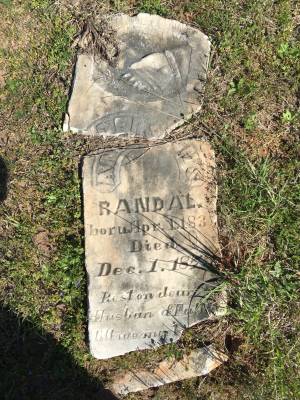 ]
Anderson Smith Randal died on December 1, 1875 (at age 42), and is buried in “Shoal Creek Baptist Church Cemetery”, Hart County, Georgia. (Ref: Find A Grave Memorial# 75195717).11)
]
Anderson Smith Randal died on December 1, 1875 (at age 42), and is buried in “Shoal Creek Baptist Church Cemetery”, Hart County, Georgia. (Ref: Find A Grave Memorial# 75195717).11)
In June 2008, Danny Randall's family (now living in Oklahoma) organized memorial services through the “Daughters of the Confederacy” for 3 of our ancestors in north Georgia. Danny's family placed the new foot stone at the grave for each of the following (all sons of Oney Cypress Randal and Susannah) at the Martin, GA, Cemetery in Stephens County:
- Anderson S. Randal
Danny's 4th Great Grandfather, James Ronald Randall (another son of Oney Cypress Randal and Susannah), is buried in Carnesville, GA., and his grave already had a Confederate headstone, so they didn't add anything there.
The Life of Sophia Randal after the death of Anderson
1880 United States Federal Census
State: Georgia
County: Franklin
Inhabitants of: Bryant (206th Dist.)
Date: June 29, 1880
| Name | Age | Gender | Relationship | Occupation | Birthplace |
|---|---|---|---|---|---|
| Sophia Randal | 45 | F | Keeping House | Georgia | |
| Henry O. Randal | 23 | M | Son | Farmer | Georgia |
| Susie J. Randall | 18 | F | Daughter | At Home | Georgia |
| Thomas P. Randall | 16 | M | Son | Farm Laborer | Georgia |
| Rola P. Randall | 14 | M | Son | Farm Laborer | Georgia |
| Sallie Randall | 12 | F | Daughter | At Home | Georgia |
| Ira R. Randall | 10 | M | Son | Farm Laborer | Georgia |
| John B. Randall | 8 | M | Son | At Home | Georgia |
Note: The census incorrectly lists Sophia's age as 45, when she was in fact 46 years old. In the census, Sophia indicates that her father was born in South Carolina and that her mother was born in Virginia.
Source: Year: 1860; Census Place: Subdivision, Franklin, Georgia; Roll: M653_121; Page: 670; Image: 670; Family History Library Film: 803121
According to the U.S. Federal Census, by 1900, Sophia had moved in with her daughter, Sallie Randal Mitchell, and her family.
1900 United States Federal Census
State: Georgia
County: Franklin
Inhabitants of: Bryant Dist.
Date: June 8, 1900
| Name | Relationship | Gender | Date of Birth | Age | Occupation | Birthplace |
|---|---|---|---|---|---|---|
| Benson Mitchel | Head | M | Dec. 1871 | 28 | Farmer | Georgia |
| Sallie Mitchel | Wife | F | Nov. 1868 | 31 | Georgia | |
| Flora Mitchel | Daughter | F | Feb. 1894 | 6 | Georgia | |
| Corbet Mitchel | Son | M | Apr. 1895 | 5 | Georgia | |
| Mammie Mitchel | Daughter | F | Apr. 1896 | 4 | Georgia | |
| Sophia Randall | Mother | F | May 1834 | 66 | Georgia |
Note: Benson Mitchel's birth year was incorrectly recorded as 1871. It was listed on his tombstone as 1870.12)
Source: Year: 1900; Census Place: Bryant, Franklin, Georgia; Roll: 197; Page: 9B; Enumeration District: 0022; FHL microfilm: 1240197
Sophia Mitchell Randal died July 20, 1900 (at age 66) in Franklin County, Georgia.
Lineage
| Name | Line Manager | Job Title | Photo |
|---|---|---|---|
| Anderson Smith Randal | |||
| Oney Cypress Randal | Anderson Smith Randal | (1796-1854) Father |  |
| Susannah W. Wilkins | Anderson Smith Randal | (1800-1874) Mother | |
| John Bull-Randal | Oney Cypress Randal | (1766-1851) Grand Father | |
| Charles Smith Wilkins | Susannah W. Wilkins | (1755-1817) Grand Father |  |
| Elizabeth Puryear | Susannah W. Wilkins | (1775-1837) Grand Mother | |
| James Wilkins | Charles Smith Wilkins | Great Grand Father | |
| Arabella Smith Marrow | Charles Smith Wilkins | Great Grand Mother | |
| Seymour Puryear | Elizabeth Puryear | (1750-1788) Great Grand Father | |
| Sarah Royster | Elizabeth Puryear | (1754-1803) Great Grand Mother | |
| Hanna Harvey | Oney Cypress Randal | (1776-1852) Grand Mother | |
| Thomas Bull Jr. | John Bull-Randal | (1726-1797) Great Grand Father | |
| Sarah Randal | John Bull-Randal | Great Grand Mother | |
| Col. Thomas Peyton Harvey, Sr. | Hanna Harvey | (1740-1806) Great Grand Father |  |
| Sarahann Williams | Hanna Harvey | Great Grand Mother | |
| Thomas Bull, Sr. | Thomas Bull Jr. | (1700-1763) Great, Great Grand Father | |
| Susanna Harwell | Thomas Bull Jr. | Great, Great Grand Mother | |
| Ambrose Harwell | Susanna Harwell | (1686-1739) Great, Great, Great Grand Father | |
| Elizabeth Browne | Susanna Harwell | Great, Great, Great Grand Mother | |
| William Harvey | Col. Thomas Peyton Harvey, Sr. | (1713-1745) Great, Great Grand Father | |
| Elizabeth Roebuck | Col. Thomas Peyton Harvey, Sr. | (1715-1745) Great, Great Grand Mother | |
| Onesiphorus Harvey | William Harvey | (1677-1732) Great, Great, Great Grand Father |  |
| Dorothy Gaskins | William Harvey | (1678-1726) Great, Great, Great Grand Mother | |
| Robert Roebuck | Elizabeth Roebuck | (1688-1750) Great, Great, Great Grand Father | |
| Elizabeth Flowers | Elizabeth Roebuck | (1693-1751) Great, Great, Great Grand Mother | |
| Robert Roebuck, Sr. | Robert Roebuck | (1653-1709) Great, Great, Great, Great Grand Father |  |
| Elizabeth Jones | Robert Roebuck | (1650-1751) Great, Great, Great, Great Grand Mother | |
| Josias Gaskins | Dorothy Gaskins | Great, Great, Great, Great Grand Father | |
| Dorothy Dameron | Dorothy Gaskins | Great, Great, Great, Great Grand Mother |
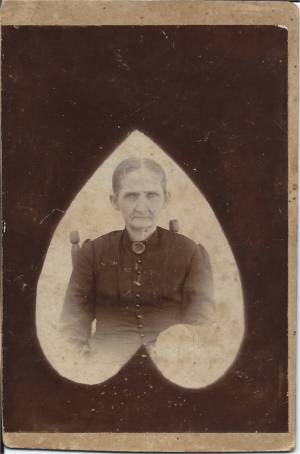
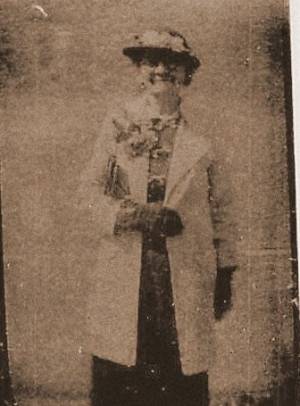
![Anderson Randal's Children (Circa 1909 - but quite possibly during late August 1908 while gathering to bury/mourn their sister, [[:sallie_d_randall|Sallie D. Randall-Mitchell]]). Left row down: Roland "Role" Pickney Randall, Martha "Mattie" Elizabeth Randall & Henry Oran Randall. Right row down: Thomas Watson (TW) Randall, Susan "Susie" Jane Randall & Ira Robert Randall. Anderson Randal's Children (Circa 1909 - but quite possibly during late August 1908 while gathering to bury/mourn their sister, [[:sallie_d_randall|Sallie D. Randall-Mitchell]]). Left row down: Roland "Role" Pickney Randall, Martha "Mattie" Elizabeth Randall & Henry Oran Randall. Right row down: Thomas Watson (TW) Randall, Susan "Susie" Jane Randall & Ira Robert Randall.](/lib/exe/fetch.php?w=800&tok=8cc690&media=anderson_smith_randal:left-down_roland_role_pickney_randall_-martha_elizabeth_mattie_randall-henry_oran_randall-_right_down_thomas_watson_randall-susan_susie_jane_randall-ira_robert_randall.jpg)
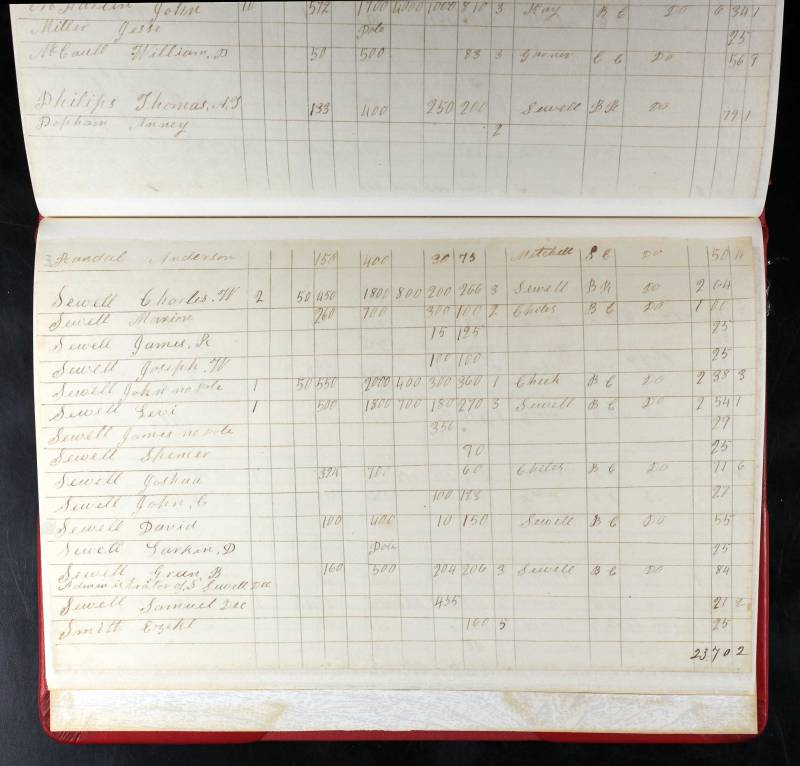
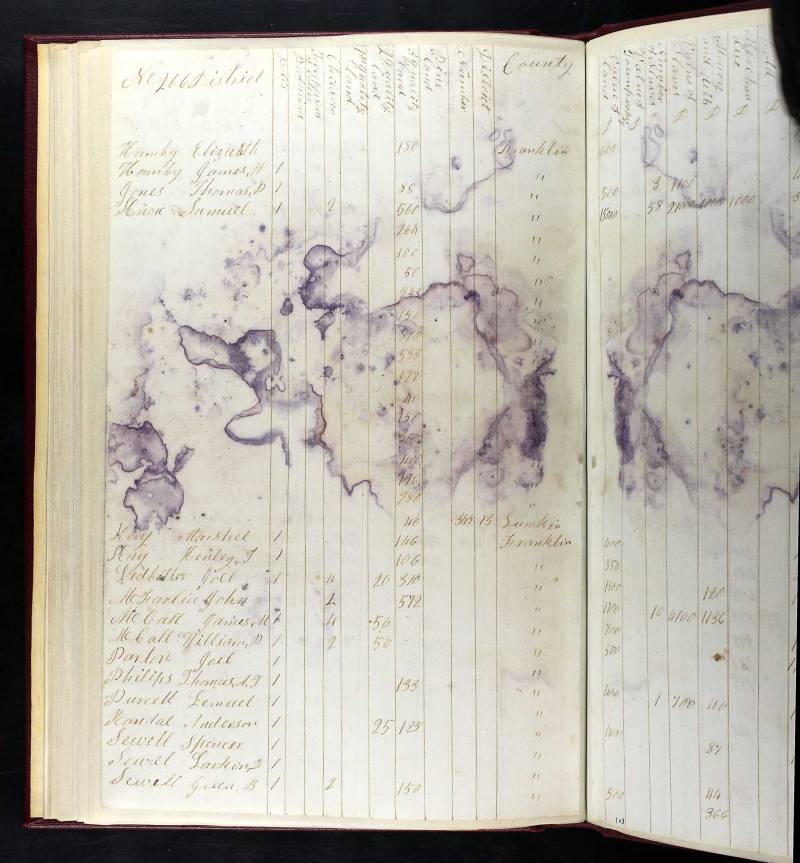
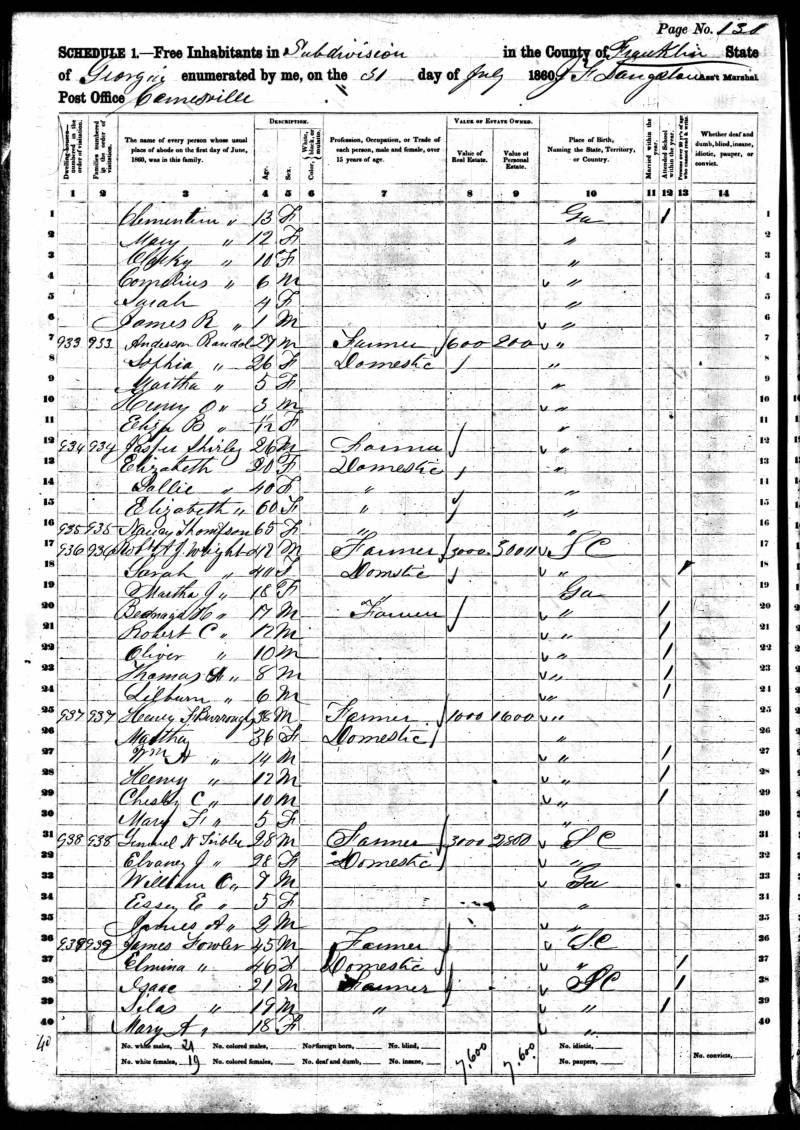
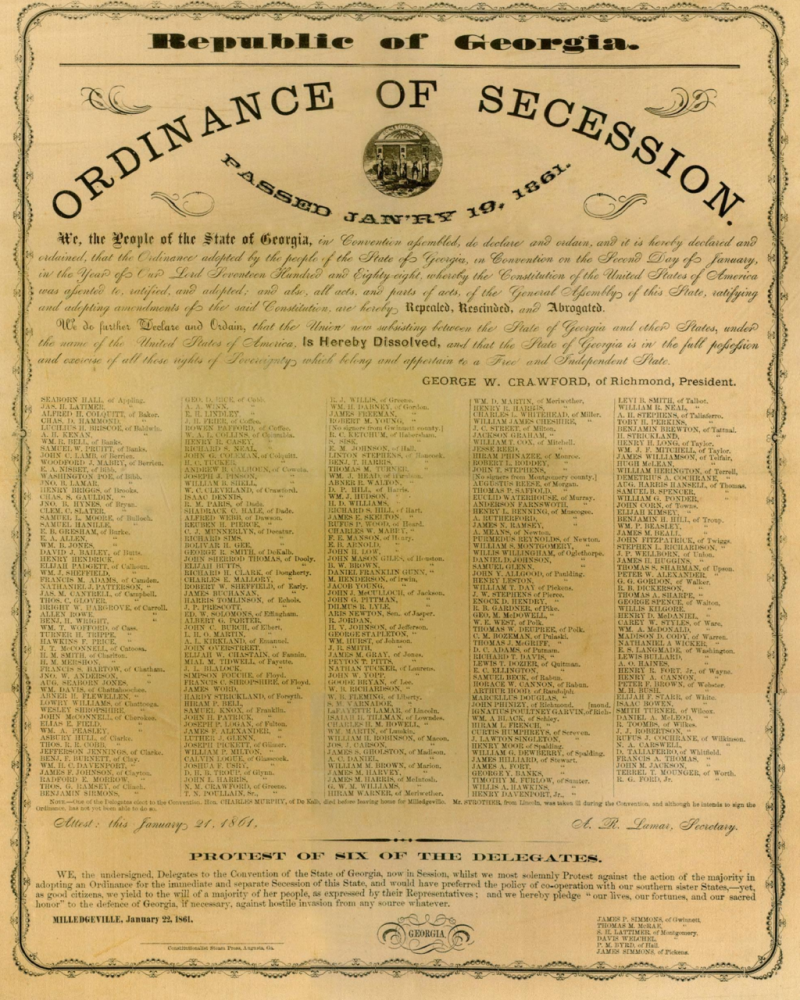
![The 34th GA flag is seventy-two and one-half inches by 33 inches. There are three strips of white silk. Each strip is 11 inches wide. They are hand stitched together. The twenty-two inch canton has in the center one gold star with a red dot; above and below the star are two gloves, one pointing up and one pointing down. Each has a gold heart embroidered on the back of it. There are ten other gold stars with red dots in the center. A green wreath and red flowers circle the ten stars. It is patterned exactly after the original. \\ Source: [[http://www.battleofraymond.org/flag.htm|http://www.battleofraymond.org/flag.htm]] The 34th GA flag is seventy-two and one-half inches by 33 inches. There are three strips of white silk. Each strip is 11 inches wide. They are hand stitched together. The twenty-two inch canton has in the center one gold star with a red dot; above and below the star are two gloves, one pointing up and one pointing down. Each has a gold heart embroidered on the back of it. There are ten other gold stars with red dots in the center. A green wreath and red flowers circle the ten stars. It is patterned exactly after the original. \\ Source: [[http://www.battleofraymond.org/flag.htm|http://www.battleofraymond.org/flag.htm]]](/lib/exe/fetch.php?media=anderson_smith_randal:confederate_34th_regimental_infantry_flag2.jpg)









